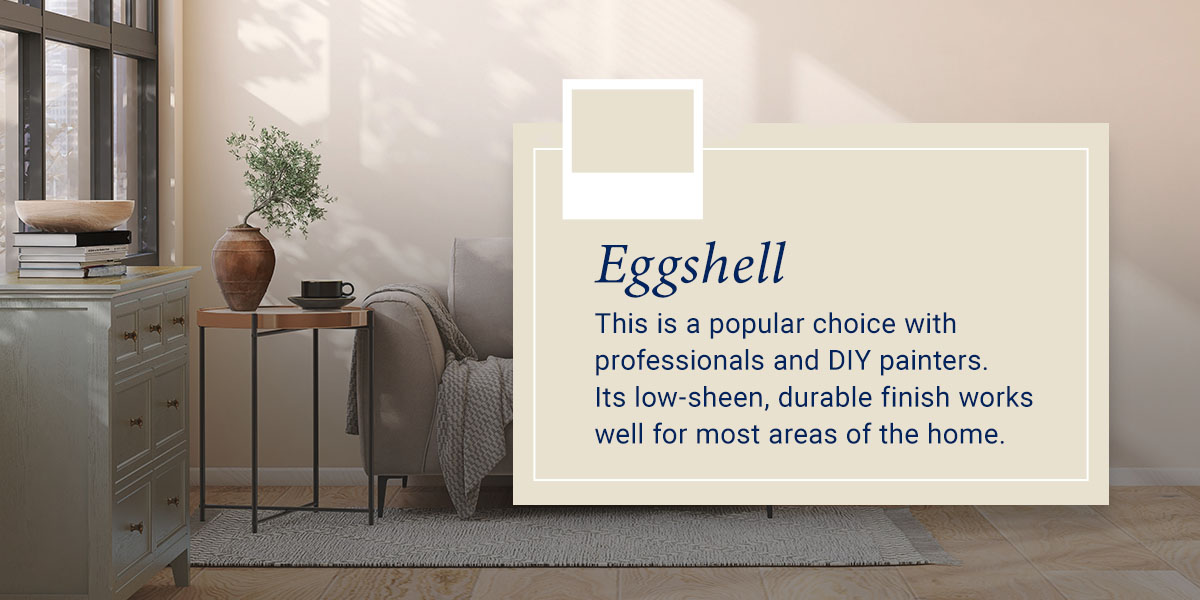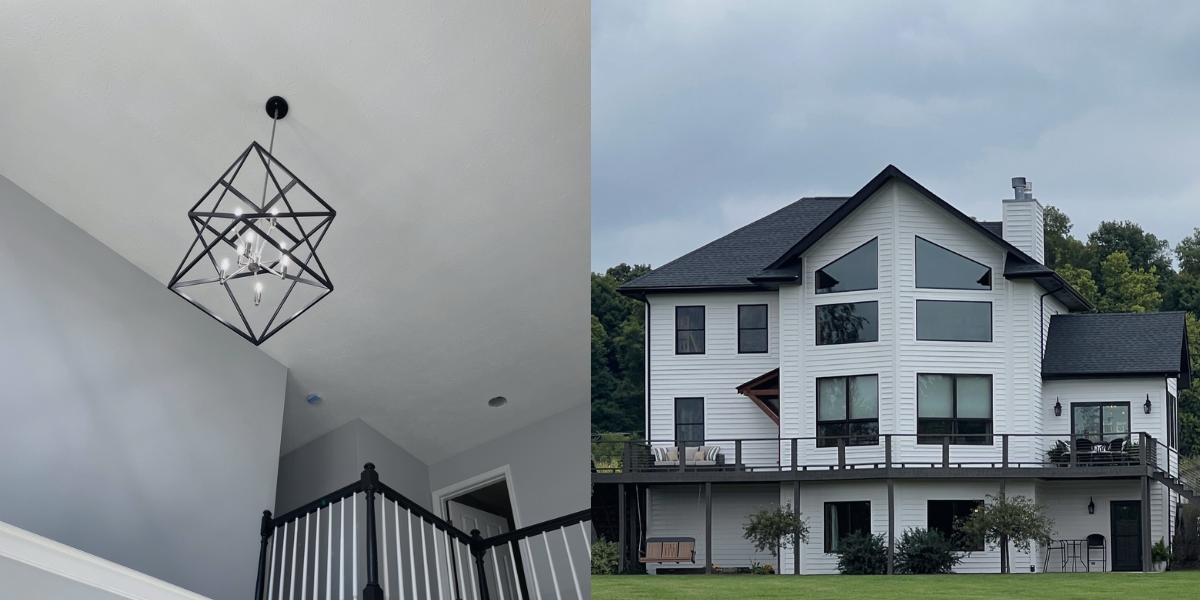When approaching a home painting project, you want to use the right type of paint to get the best results. The differences between interior and exterior paint make them fit their specific environments.
Exterior paint is durable and weather-resistant, making it perfect for the outdoors. Interior paint is safer, easier to clean and better suited to the indoors. Learn more about the differences between these paint types to make the best choice for you.
What Is the Difference Between Interior and Exterior Paint?
Whether at the end of an artist’s brush or a painter’s roller, the composition of paint is the same. The four basic components are:
- Pigments: These give the paint its color.
- Resin: This is the binding agent that adheres paint to a surface and makes it solid when dry.
- Solvent: This is the carrier that keeps paint liquid until applied to the surface.
- Additives: These are extra ingredients to boost performance, such as anti-mildew agents.
Varying the formula adds properties ideal for specific applications. Exterior paint must be durable and weather-resistant to withstand the elements. It needs to adhere to different surface types and textures. Indoor paint doesn’t have to work as hard. Its purpose is decorative. While it should resist stains, it’s less hardy than external paint.
The most significant difference between interior and exterior paint composition is the resin. In outdoor paint, this binding agent is softer and more flexible. It resists UV rays and weathering. The resin in interior paint is inflexible to prevent scuffing. Additives also differ to make each paint type perform better in its environment.
What Is Interior Paint?
Interior paint beautifies and protects the inside of our homes. Its composition is safer for humans. Many paints emit low volatile organic compounds (VOCs). VOCs are gases released into the air by many household products and can cause harm when breathed in. Indoor paints have a lower VOC concentration, and most don’t contain fungicides.
Types of interior paint include:
- Latex: This water-soluble paint is fast-drying and easy to clean. Although less durable, it accommodates low-wear-and-tear areas.
- Acrylic: This paint is similar to latex and is also water-soluble. Acrylic’s higher polymer count makes it more durable (and expensive).
- Alkyd: This oil-based paint lasts longer than water-soluble paints but is slower to dry. Alkyd paint works well for higher-traffic surfaces like doors and floors.
Indoor paints come in various vibrant colors and finishes, from matte to gloss.
What Is Exterior Paint?
Exterior paint withstands the elements while enhancing the outside of your home. It faces UV rays, wind, rain and extreme temperatures. Its breathable formulation prevents water from getting trapped and causing mildew. Flexible resin allows the molecules to expand and contract according to the temperature. This elasticity also helps resist peeling, chipping and discoloration.
Types of exterior paint include:
- Acrylic: The composition of acrylic outdoor paint differs from indoor. Added chemicals make it more elastic and able to react to temperature changes.
- Latex: This is a cheaper alternative to acrylic that is quick drying. Like acrylic, it expands and contracts according to temperature.
- Oil-based: This option is less common than acrylic and latex paint due to higher fume emissions. Oil-based external paint suits well-ventilated outdoor areas. It shrinks less than water-soluble paints.
Weather-resistant outdoor paint contains more VOCs than interior paint. Its design lets it adhere to rougher surfaces like wood, brick, metal or stucco. External paint offers fewer color and finish choices than indoor paint.
Best Applications for Interior and Exterior Paint
Choosing the right paint for the job is crucial. Interior paint contains less harmful chemicals and is more resistant to smudges. Exterior paint’s durability and weather-resistant additives make it suitable for outdoor surfaces.
When to Use Interior Paint
Use interior paint on walls, doors, window frames and ceilings inside your home. The vibrant color options are ideal for giving the interior a fresh look. With a wider choice of finishes, you can find one that best suits the aesthetic and use.
When choosing the type of paint for your interior project, consider the use and traffic in the area. Latex paints are ideal for areas less prone to wear, like walls and ceilings. Acrylic is more durable, so it suits cabinets and doors. Oil-based paints are less common but complement higher-wear surfaces like floors.
A paint’s finish influences where you should use it. It affects a surface’s look and ease of maintenance. Examples of interior finishes include:
- Flat or matte: These finishes do not reflect light, making them ideal for hiding flaws. They’re challenging to clean, so they are better suited to ceilings and minimal-traffic areas.
- Eggshell: This is a popular choice with professionals and DIY painters. Its low-sheen, durable finish works well for most areas of the home.

- Semi-gloss: The most resistant to wear and tear, semi-gloss has a high-shine look. This option is ideal for doors, windows and trims.
While using indoor paint outside isn’t harmful, it isn’t recommended. This paint lacks the additives and pliable resin structure of outdoor paint and would likely crack when faced with harsh outdoor conditions.
Tackling your interior painting is a rewarding but complex project. Before grabbing your roller, it helps to read up on how to paint the inside of your home.
When to Use Exterior Paint
You can use exterior paint for any outdoor painting project. Examples include the exterior of your home, windows, doors, balconies and sheds. It withstands harsh weather conditions and improves the outward appearance of your home. Maintaining a well-kept exterior adds to your home’s value and curb appeal.
Water-based latex and acrylic paints work best for exterior projects. Their composition makes them flexible and breathable. They are also less likely to crack than oil-based paints and adhere well to most surfaces. Oil-based paint’s durability and simple cleaning work in high-traffic areas.
You have a few finish choices:
- Flat: The nonreflective surface may be ideal for hiding flaws in older houses. The paint’s porous nature makes it less durable and better suited to exterior siding.
- Semi-gloss: The higher sheen makes this finish easier to clean. It is more long-lasting than flat finishes and works well on window frames.
- High-gloss: This is the most reflective and resilient finish. It makes a statement but also shows imperfections. Use this finish on doors or shutters.
Avoid using exterior paint indoors, as it is designed and intended for outdoor use. Its chemical composition is ideal for weather resistance, not human inhalation. The higher VOC content, fungicides and other additives are advised for outdoor use only. Using this paint indoors carries health risks. Instead, stick to indoor paint inside your home.
Repainting your home’s exterior is no small task! You need to consider the right paint for the specific climate, the cost and the best time of the year to paint. Hiring a professional painting company eliminates the hassle of a large-scale painting project.
Choose The Ohio Painting Company® for Interior and Exterior Painting
The Ohio Painting Company’s team of professionals is ready to make your home look its best. Our qualified painters know the right paint for the job for excellent results!
If you’re looking to repaint the exterior of your home to boost curb appeal or give your interior a brand-new look, trust The Ohio Painting Company. Call us at (937) 468-4140 or request a quote and let us take your next painting project to new heights!







